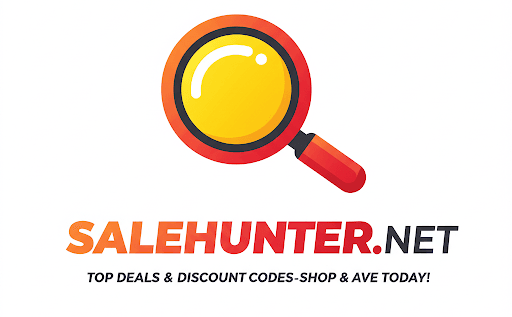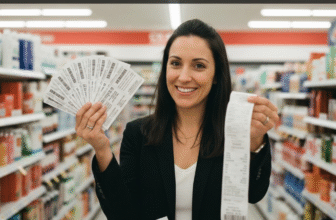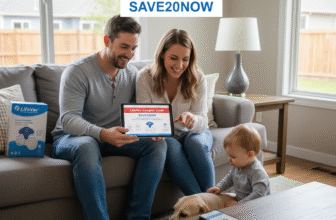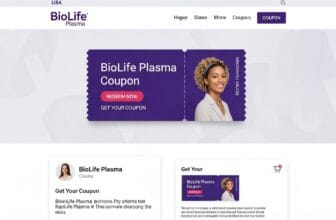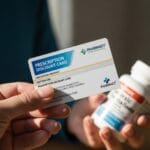
Slash Your Medication Bills: An Insider’s Guide to Prescription Discounts
The moment the pharmacist tells you the total for your prescription can feel like a punch to the gut. For millions of Americans, the rising cost of medication isn’t just an inconvenience; it’s a major source of financial stress and a barrier to essential healthcare. It forces impossible choices between managing a chronic condition and paying for groceries, between a child’s antibiotic and the monthly rent. But what if you had an insider’s guide to navigating this complex and often frustrating system? What if you knew the secrets to unlocking significant savings that aren’t always advertised? The good news is, you can take back control. Lowering your prescription costs is not only possible, but there are numerous strategies available to you, many of which you can start using today. This comprehensive guide will walk you through the landscape of prescription discounts, from simple, immediate fixes to long-term strategies, empowering you to become your own best advocate at the pharmacy counter.
The Foundational Step: Always Start with a Conversation
Before we dive into cards, coupons, and programs, the most powerful tool in your savings arsenal is your own voice. The relationship you have with your doctor and your pharmacist is paramount. These healthcare professionals are your partners, and they are often more aware of cost-saving measures than you might think. When your doctor is about to write a new prescription, that is your moment to be proactive.
Ask these critical questions:

- “Is this a brand-name or a generic drug?”
- “If it’s a brand name, is there a generic equivalent that would work for me?”
- “Are there other, less expensive drugs in the same class that we could consider?”
- “Do you have any free samples of this medication that I could try?”
Doctors are busy, and while they care about your well-being, they may not always be thinking about the final cost at the pharmacy. By initiating this conversation, you bring the financial aspect of your treatment to the forefront. They may be able to switch you to a “first-line” treatment that is just as effective but significantly cheaper. Don’t be shy; this is your health and your budget on the line. Similarly, your pharmacist is a treasure trove of information. They see the prices firsthand and often have suggestions that your doctor might not. They can advise you on whether your insurance has a “preferred” drug in the same category or if a 90-day supply would be more cost-effective.
Generic vs. Brand-Name Drugs: The Single Biggest Money-Saver
Understanding the difference between generic and brand-name drugs is the cornerstone of prescription savings. When a pharmaceutical company develops a new drug, they have a patent that gives them exclusive rights to sell it for a certain period. During this time, they can charge a premium price to recoup their research and development costs. When the patent expires, other manufacturers are allowed to produce and sell their own versions of the drug. These are the generics.
A common misconception is that “generic” means lower quality. This is simply not true. The U.S. Food and Drug Administration (FDA) has stringent requirements for generic drugs. For a generic to be approved, the manufacturer must prove that it is bioequivalent to the brand-name version. This means it has the same active ingredient, strength, dosage form, and route of administration. It works in the body in the exact same way and provides the same clinical benefit. The reason they are so much cheaper—often 80-85% less—is that the generic manufacturers don’t have the massive research, development, and marketing costs that the original company did. They are simply replicating a known formula. Whenever a generic option is available, it’s almost always the most financially savvy choice.
Your Toolkit for Immediate Savings: Cards and Coupons
Even with generic drugs, costs can add up. This is where a multi-pronged approach involving discount cards and coupons comes into play. Think of these as your frontline tools for chipping away at the retail price.
The Truth About Prescription Discount Cards
You’ve likely seen them online or in your doctor’s office—free cards that promise big savings on prescriptions. But how do they work? Are they a scam? The short answer is that they are legitimate, and they can offer real savings, but it’s important to understand what they are and what they aren’t. Prescription discount cards are NOT insurance. They do not have a monthly premium, a deductible, or copays. Instead, they are run by companies that negotiate lower prices with large networks of pharmacies, much like insurance companies do.
When you present a discount card, the pharmacy processes the sale through the card’s network instead of through your insurance or as an uninsured cash purchase. You then pay the negotiated, lower price. These cards are most beneficial for people who are uninsured or underinsured. However, they can sometimes offer a price that is even lower than your insurance copay, especially for generic drugs. It is always worth asking your pharmacist to run the price through your insurance and then through a discount card to see which is cheaper. You cannot use both on a single transaction, but you can choose the option that saves you the most money. There is no harm in having one; they are free to obtain and use.
Unlocking Manufacturer Coupons and Co-pay Cards
For brand-name drugs, the savings game changes. This is where manufacturer coupons become incredibly valuable. Pharmaceutical companies know their brand-name drugs are expensive, and they want to keep patients using them, especially those with commercial insurance. To offset the high co-pays that insurance plans often require for brand-name drugs, they offer co-pay assistance cards or coupons.
You can typically find these directly on the drug manufacturer’s website. You’ll often answer a few eligibility questions, and then you can download and print the card or save it to your phone. When you go to the pharmacy, you present this coupon along with your primary insurance. The coupon then covers a large portion, or sometimes all, of your remaining co-pay. It’s not uncommon for a coupon to reduce a $150 co-pay down to just $10 or $25. It is important to note that these programs are almost exclusively for patients with commercial or private insurance. They cannot be used by individuals on government-funded programs like Medicare or Medicaid due to anti-kickback laws.
Going Deeper: Programs for Substantial Financial Relief
For those facing significant financial hardship or dealing with the astronomical cost of specialty medications, cards and coupons may not be enough. In these cases, it’s time to explore more robust assistance programs.
Patient Assistance Programs (PAPs): A True Lifeline
Patient Assistance Programs, often called PAPs, are programs run by pharmaceutical manufacturers to provide free or very low-cost medication to people who have low to moderate incomes and are uninsured or underinsured. These are not discount programs; in many cases, they provide the medication completely free of charge. Each manufacturer has its own program with its own set of eligibility requirements, which are typically based on your income relative to the Federal Poverty Level.
The application process can be more involved than simply downloading a coupon. You will likely need to fill out an application form, provide proof of your income (like a tax return or pay stubs), and have your doctor complete a portion of the form to confirm the prescription. While it requires some administrative work, the payoff can be life-changing, potentially saving you thousands of dollars a year. If you take a brand-name medication long-term, it is absolutely worth investigating whether its manufacturer offers a PAP. Many non-profit organizations also exist to help patients navigate the application process for these programs.
Proactive Strategies: Taking Control of Your Medication Costs
Saving money on prescriptions isn’t just about what you do at the counter; it’s about the strategic choices you make beforehand. Being a proactive, informed consumer can lead to surprising savings.
The Shocking Truth: You Must Shop Around
You wouldn’t buy a car or a television without comparing prices, so why do we treat prescriptions differently? Most people assume the price of a drug is fixed, but that couldn’t be further from the truth. The price for the exact same medication—same dosage, same quantity—can vary by hundreds of dollars from one pharmacy to the next, even within the same zip code. A big-box store pharmacy might charge $15 for a generic, while a grocery store pharmacy down the street might charge $65 for the very same thing. This variation is due to the different deals each pharmacy chain strikes with wholesalers and Pharmacy Benefit Managers (PBMs). Never assume the first price you’re quoted is the best one. Use online price comparison tools or simply call a few different pharmacies in your area to ask for their cash price for your medication. The five minutes you spend on the phone could save you a significant amount of money.
The Power of the 90-Day Supply
For medications you take long-term, ask your doctor and pharmacist about getting a 90-day supply instead of a 30-day supply. In many cases, the cost for a three-month supply is significantly less than paying your co-pay three separate times. For example, your insurance might charge you a $15 co-pay for a 30-day supply but only a $30 co-pay for a 90-day supply, effectively giving you one month free. This also adds a layer of convenience, reducing trips to the pharmacy and the risk of running out of your medication.
Explore Safe Mail-Order and Online Pharmacies
Reputable mail-order and online pharmacies can be another excellent source of savings and convenience, particularly for 90-day supplies of maintenance medications. Insurance companies often partner with specific mail-order pharmacies and offer lower prices to incentivize their use. Beyond insurance, some cash-based online pharmacies have emerged that offer transparent, low pricing on generic drugs by cutting out many of the middlemen that inflate costs. However, it is absolutely critical to ensure you are using a legitimate and safe online pharmacy. Look for pharmacies that are based in the United States and are accredited as a Verified Internet Pharmacy Practice Site (VIPPS). This seal of approval indicates that the pharmacy meets state licensing requirements and other stringent criteria for safety and quality.
Don’t Be Afraid to Appeal
If your insurance company denies coverage for a prescribed medication, don’t automatically give up. You have the right to appeal their decision. The process often starts with your doctor submitting a “prior authorization” request, which is essentially a letter explaining to the insurance company why that specific medication is medically necessary for you. If that is still denied, you can file a formal appeal. The process can seem daunting, but your doctor’s office can often help guide you. Many denials are overturned on appeal, especially with strong supporting documentation from your physician.
The journey to affordable medication can feel like navigating a maze, but it’s a maze you can master. By combining these strategies—talking openly with your healthcare team, prioritizing generics, using discount cards and manufacturer coupons, exploring patient assistance programs, and proactively shopping for the best price—you can transform your experience at the pharmacy. You can move from a place of stress and uncertainty to one of empowerment and control, ensuring you get the medications you need without breaking the bank.
